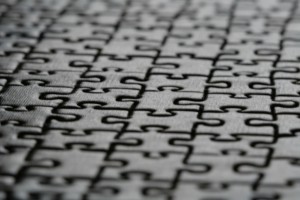The National Security Agency (NSA) was responsible for establishing a standardized enciphering system for commercial use to update the previous obsolete system. In doing so it chose the Lucifer Cipher, which was the strongest commercial cipher developed. The primary reason it was chosen was because it was good enough, but only just. The NSA wanted a system which was complex enough so th at an average person would not be able to solve it, but not too strong that the NSA itself would not be able to break it. As the Lucifer Cipher had only 56 bits of code (100,000,000,000,000,000 possibilities) an average person would not have access to enough computing power to solve it, but the NSA would have enough to test out every possibility and break it if necessary.
at an average person would not be able to solve it, but not too strong that the NSA itself would not be able to break it. As the Lucifer Cipher had only 56 bits of code (100,000,000,000,000,000 possibilities) an average person would not have access to enough computing power to solve it, but the NSA would have enough to test out every possibility and break it if necessary.
I feel that this is an invasion of privacy by the government as it should not have the right to break into a private message, when the sender intended it to be secure. This choice of a cipher that the government could break came at a cost to security and longevity, as the exponential growth of commuters over the years since the 70’s now allows for this code to be broken much more easily today.
Image: “USA Flag” by freefotouk, Flickr (CC)



